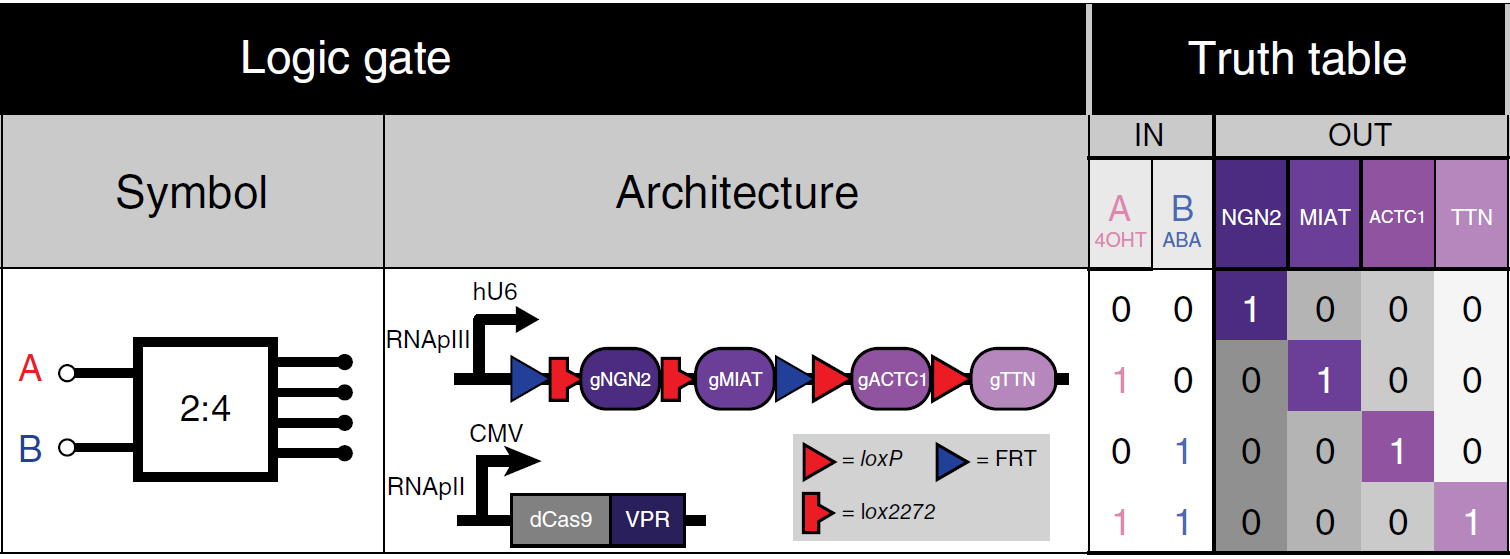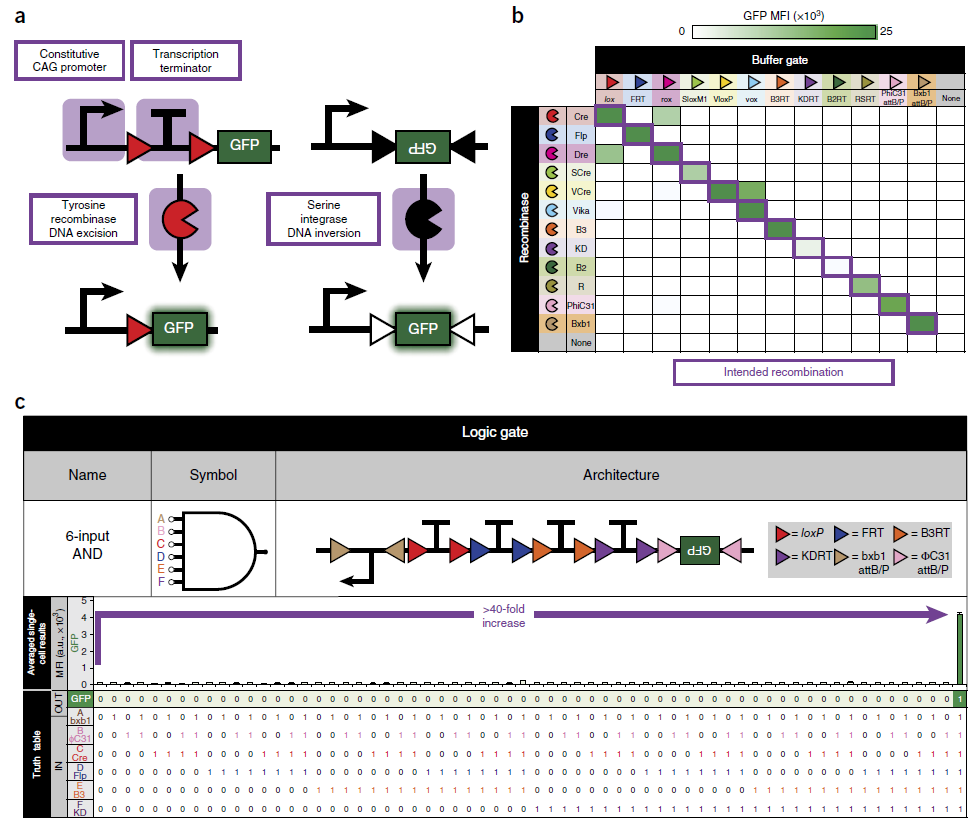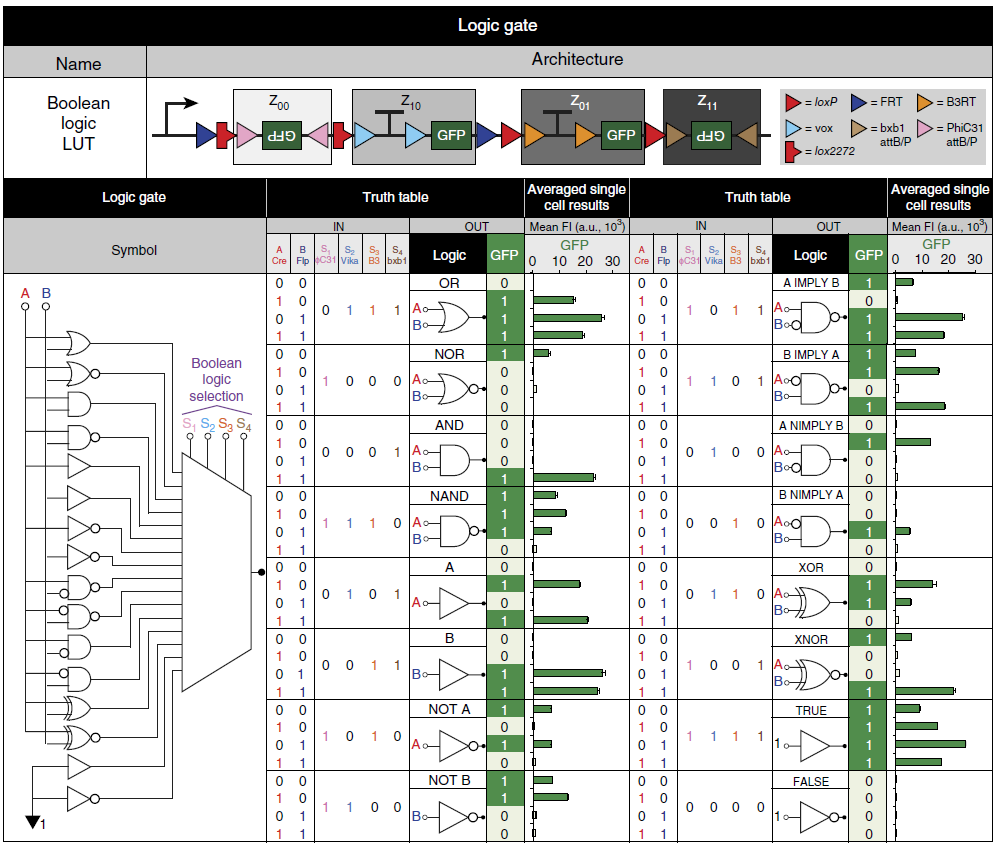The BLADE framework has been created for laying computational chains in the DNA of mammals and humans

The fundamental goal of synthetic biology is to reprogram cells in a predictable and efficient manner so that they can perform calculations and perform a given biological task. Cells are genetically modified — chains are introduced for bio-calculations. Such mini-computers demonstrate promising results in therapy, diagnostics and industrial biotechnology. Synthetic biology is one of the most promising areas of modern science.
When programming cells, scientists have to solve complex applied problems. For example, the implementation of a simple binary Boolean function (with two input operands) in a cell of prokaryotes or eukaryotes requires the construction of a multitude of genetic chains, the extensive design and tuning of genetic components. As for more complex computational circuits, this is an exceptional rarity in the scientific literature.
The problem is solved by compiling a catalog of genetic components for computational circuits and developing software for the automatic design of computational circuits in a cell . Unfortunately, such software is still available for programming bacteria cells, but not for mammalian cells and humans. Now it is not known whether various parts of the software can be transferred from the programming of bacterial cells to the cells of higher organisms.
')
This problem was solved by a group of scientists from the Department of Bioengineering and the Center for Biological Design at Boston University, the Department of Electrical Engineering and Computer Engineering at Boston University, as well as the Department of Biosystems Science and Electrical Engineering of the Swiss Higher Technical School Zurich. They introduced the BLADE framework . It is a general-purpose framework that helps build complex genetic computational chains in mammalian cells using site-specific recombinases — enzymes that recombine between individual DNA segments. The use of site-specific recombinases is the main innovation of this framework.
Recombinases work like scissors, cutting and fastening specific sections of DNA in a cell. The specific enzymes that are used in this research work recognize two patterns in the DNA chain, each between 30 and 50 base pairs. As soon as the recombinase finds the target fragments, it cuts out all the unnecessary DNA between them and connects the ends of the double helix. This BLADE genetic editing technique is similar to the well-known CRISPR technique.
Traditional cellular mechanics are used to design genetic chains: the DNA chain is rewritten into RNA, and then the RNA is translated into the corresponding proteins. The beginning and the end of the work on the translation of genes into proteins is controlled by the corresponding DNA fragments. One of them - the promoter - signals the start of the operation, and it continues until the DNA chain reaches another fragment that signals the termination of the operation.
The authors of the scientific work say that the BLADE framework, in contrast to previous developments, requires minimal optimization from a bioprogrammer. He is ready to lay chains with a large number of input and output operands without increasing the number of transcription elements, that is, without increasing the complexity of the circuit.
To test the framework in action, the researchers designed and implemented more than 100 different functional computing circuits, including the most complex logical operations that were ever performed in living cells.
For example, the illustration shows how site-specific recombinations of tyrosine and serine integrase allow constructing the Boolean function AND with several input operands.

(a) Recombinations perform simple logical BUF operations through cutting or inversion; (b) Verification of the effectiveness of all recombinations for logical BUF operations; (c) AND operation with six input operands
The possibilities of the BLADE framework are not limited to this. It allows you to create much more complex computational circuits. The following illustration shows the programmable storage device logic that can be programmed using site-specific recombinases in a mammalian cell.

Scientists have designed 113 different circuits, of which 96.5% functioned successfully. This is much more than the 25% success rate for genetic engineering.
The development of the BLADE framework is essential for synthetic biology. Scientists have laid in the DNA of mammals more than 100 different computational circuits, most of which are implemented for the first time. Although this work does not implement any useful computing systems, but researchers have proposed a universal programming technique that colleagues can use to implement specific applications. Programmable cells can be used in various fields: from cancer treatment to creating biological tissues that, on command, replace worn parts of the body.
Until today, cell programming experiments have mostly been carried out on E. coli cells and other bacteria, because their genes are relatively easy to manipulate. Now the approach of synthetic biology is extended to mammalian and human cells.
The scientific work was published on March 27, 2017 in the journal Nature Biotechnology (doi: 10.1126 / science.aal0963, pdf ).
Source: https://habr.com/ru/post/370319/
All Articles